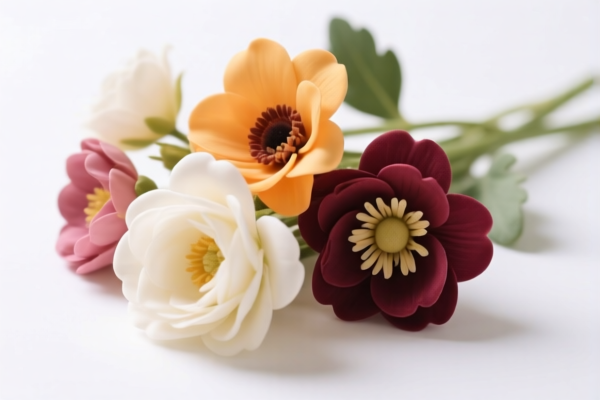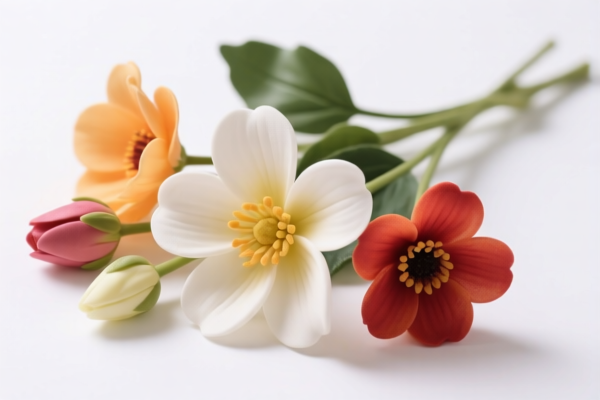| HS Code | Official Doc | Tariff Rate | Origin | Destination | Effective Date |
|---|---|---|---|---|---|
| 7002101000 | Doc | 58.9% | CN | US | 2025-05-12 |
| 7002102000 | Doc | 55.0% | CN | US | 2025-05-12 |
| 7018905000 | Doc | 61.6% | CN | US | 2025-05-12 |
| 3926400010 | Doc | 35.3% | CN | US | 2025-05-12 |
| 3926400090 | Doc | 35.3% | CN | US | 2025-05-12 |
| 3924905650 | Doc | 40.9% | CN | US | 2025-05-12 |
| 3924905610 | Doc | 40.9% | CN | US | 2025-05-12 |
| 6702102000 | Doc | 38.4% | CN | US | 2025-05-12 |
| 6702104000 | Doc | 33.4% | CN | US | 2025-05-12 |




Artificial Berries
Artificial berries are manufactured products designed to visually and sometimes texturally resemble natural berries. They are typically employed for decorative, culinary, or crafting purposes where the use of real berries is impractical, unavailable, or undesirable.
Material
The composition of artificial berries varies based on intended use and quality. Common materials include:
- Plastic: Polyethylene (PE), polypropylene (PP), and polyvinyl chloride (PVC) are frequently used for their durability, moldability, and cost-effectiveness. Higher-quality berries may utilize more realistic plastics.
- Foam: Polystyrene foam is used to create a softer, more lifelike texture, particularly for berries intended for decorative arrangements.
- Wax: Paraffin wax or other waxes can be used, often in combination with dyes, to create berries with a natural sheen and appearance.
- Silicone: Silicone berries are increasingly popular due to their realistic feel, flexibility, and food-safe properties.
- Glass: Used for highly decorative, often vintage, artificial berries.
Purpose
- Decoration: The most common application. Used in floral arrangements, wreaths, garlands, table centerpieces, holiday décor, and home accents.
- Culinary: Used as garnishes or decorative elements in cakes, pastries, desserts, and beverages. Food-safe varieties are required for consumption.
- Crafts: Employed in jewelry making, scrapbooking, and other DIY projects.
- Display: Used in retail settings to showcase products, or in faux food displays.
Function
Artificial berries primarily function as visual substitutes for real berries. They provide:
- Longevity: Unlike real berries, they do not decompose or spoil.
- Consistency: They maintain a uniform appearance and color.
- Versatility: They can be used in a wider range of applications without concerns about bruising or seasonal availability.
- Safety: They eliminate the risk of allergies or toxicity associated with some real berries.
Usage Scenarios
- Home Décor: Seasonal displays, permanent arrangements, event decorations.
- Event Planning: Wedding centerpieces, party decorations, holiday themes.
- Baking and Pastry: Cake decorating, dessert garnishes, creating visually appealing treats.
- Retail Displays: Showcasing products, creating attractive food presentations.
- Photography and Film: Props for food styling or set decoration.
Common Types
- Rose Hips: Often used in wreaths and garlands, mimicking the fruit of rose plants.
- Blueberries: Small, round berries used in baking and decorative arrangements.
- Raspberries: Delicate, textured berries commonly used in cake decorating.
- Strawberries: Larger, more detailed berries used in desserts and displays.
- Cranberries: Small, red berries often used in holiday decorations and baking.
- Blackberries: Dark, textured berries used in arrangements and displays.
- Mixed Berry Clusters: Combinations of various berry types for a more realistic look.
Artificial berries fall under the category of artificial flowers, foliage and fruit, and parts thereof. These items are typically made of plastics and assembled using various methods like binding with flexible materials or gluing.
Here are the relevant HS codes based on the provided reference material:
-
6702102000: This HS code covers artificial flowers, foliage and fruit of plastics, specifically those assembled by binding with flexible materials such as wire, paper, textile materials, or foil, or by gluing or by similar methods.
- 67: Chapter 67 pertains to Prepared animal, vegetable, fruit and nut preparations.
- 02: Heading 02 specifically covers artificial flowers, foliage and fruit.
- 10: Subheading 10 further specifies products of plastics.
- 20: The final two digits, 20, indicate items assembled by binding or gluing.
-
6702104000: This HS code also covers artificial flowers, foliage and fruit of plastics, but it applies to "Other" items, including parts, that are not specifically covered by 6702102000.
- 67: Chapter 67 pertains to Prepared animal, vegetable, fruit and nut preparations.
- 02: Heading 02 specifically covers artificial flowers, foliage and fruit.
- 10: Subheading 10 further specifies products of plastics.
- 40: The final two digits, 40, indicate other items including parts.
The tariff rate for 6702102000 is: Basic tariff: 8.4%, Additional tariff: 0.0%, Additional tariff after 2025.4.2: 30.0%, Total tariff: 38.4%.
The tariff rate for 6702104000 is: Basic tariff: 3.4%, Additional tariff: 0.0%, Additional tariff after 2025.4.2: 30.0%, Total tariff: 33.4%.
Customer Reviews
No reviews yet.